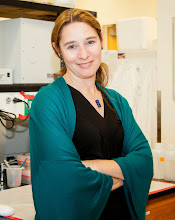Last week I introduced the Science Cheerleaders as one way to promote scientific careers and science literacy. Today I offer up the viral youtube video about the honey badger as another option for science communication outreach. For the three people that haven’t yet stumbled upon honey badger hysteria (you can even get a t-shirt, and the book version is due out soon!), here’s a short synopsis.
A guy named Randall took some National Geographic footage of an African Honey Badger (also know as a Ratel) and dubbed over his own narration in the youtube sensation The crazy nastya** honey badger. While the narrator mostly repeats the same few phrases about how the honey badger just doesn’t give a @S!! (fill in your own expletive here), he does introduce a few biologically relevant facts about this interesting mammal along the way. In fact, Randall has a series of youtube videos about different animals, each with his narrative twist.
My question today-is this an appropriate way to teach people about science, or at least spark their interest? I’ll admit that I’m not a big fan of the honey badger video (I found the narration tedious), but I might be in the minority here. As scientists, how far do we stretch our comfort zone to reach a broad audience? And for those non-scientists reading, how do we catch your attention? Is the honey badger the answer?

No comments:
Post a Comment